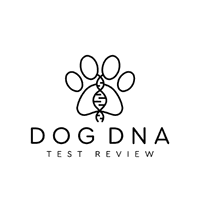Hip Dysplasia in Labradors: Using Genetics to Help
Being the proud owner of a Labrador Retriever is thrilling. As part of caring for your dog there’s one crucial health aspect you should be aware of: hip dysplasia. It’s a common genetic condition in Labradors, and understanding it can make all the difference in your dog’s quality of life.

Why Labrador Owners Should Care
You might be wondering, “Why is hip dysplasia so significant?”
In simple terms: Your Labrador’s well-being.
Hip dysplasia can affect a Labrador’s mobility, comfort, and overall happiness. By recognizing its signs early and understanding its nuances, you can take steps to manage or even prevent its progression.
It’s about ensuring your fur-friend’s best life.
With this foundation, we’ll delve deeper into what hip dysplasia is, its causes, signs, and most importantly, what you can do about it. Knowledge is your best tool, and I’m here to equip you with it.
The Anatomy of Hip Dysplasia
What is Hip Dysplasia?
Hip dysplasia. You’ve likely heard the term, but what exactly is it?
In its essence, hip dysplasia is a malformation of the hip joint where the ball (femoral head) and the socket (acetabulum) don’t fit together correctly. This misalignment causes wear and tear, leading to painful arthritis over time.
It’s a degenerative condition.

How Does it Develop in Labradors?
Labradors, unfortunately, are among the breeds genetically predisposed to hip dysplasia. But why?
The causes are multifaceted. Genetics play a significant role, with certain genes making Labradors more susceptible. However, environmental factors such as rapid weight gain, improper nutrition, or incorrect exercise during puppyhood can exacerbate the condition.
While it is a blend of nature and nurture you can use a dog DNA test specifically designed to help you discover if your Labrador is more likely to develop hip dysplasia. Here is some more information on the best dog DNA tests for health conditions.
Recognizing the Early Signs
Early detection is your ally.
Your Labrador might not show obvious pain signs initially, but subtle changes in behavior can provide clues. Look for reluctance in activities they once loved, like jumping or running. You might notice stiffness, especially after rest, or a bunny-hop gait when they run.
Trust your instincts. If something feels off, it might be.

The Long-Term Implications
Without proper intervention, hip dysplasia can progress, leading to chronic pain and limited mobility. This isn’t just about discomfort; it’s about quality of life. Your vibrant, energetic Labrador could become less active and more reserved.
It affects their zest for life.
Awareness is half the battle. With this knowledge in hand, you’re better equipped to spot the early signs and take proactive measures. Your Labrador depends on you, and with the right steps, you can pave the way for many joyful years ahead.
Managing and Preventing Hip Dysplasia
The Role of Diet and Nutrition
Your Labrador’s diet is more than just food; it’s foundational.
Obesity is a significant risk factor for hip dysplasia. Overloading your Labrador with extra weight can exert undue stress on their joints, exacerbating any predisposition to the condition. A balanced diet not only keeps their weight in check but provides essential nutrients for joint health. Look for foods fortified with glucosamine, chondroitin, and omega-3 fatty acids.
Quality matters. Always.

Tailored Exercise Regimens
All exercise isn’t created equal.
While Labradors are known for their boundless energy, it’s essential to engage them in activities that are gentle on their hips, especially during their formative months. Avoid repetitive high-impact exercises like continuous jumping. Instead, opt for swimming or controlled leash walks. It’s about finding the balance between activity and care.
Moderation is key.
Routine Veterinary Check-ups
Never underestimate the power of regular check-ups.
Your vet can spot the early signs of hip dysplasia even before they manifest visibly. Routine hip examinations and X-rays can provide invaluable insights into your Labrador’s joint health. It’s not just about catching hip dysplasia; it’s about holistic health monitoring.
Prevention over cure.

Surgical Interventions
In some cases, surgery might be the answer.
If your Labrador’s hip dysplasia advances to a stage where non-surgical interventions aren’t effective, surgical options like total hip replacement can offer relief. It’s a decision not taken lightly, but in some cases, it can significantly improve the quality of life.
It’s a beacon of hope.
Equipped with this information, you’re not just a Labrador owner; you’re an informed guardian. By understanding the nuances of hip dysplasia and taking proactive measures, you can ensure your furry friend enjoys the comfort, happiness, and active life they deserve. Your commitment today shapes their tomorrow
The Importance of Genetic Testing for Hip Dysplasia in Labradors
Demystifying Genetic Testing
Genetic testing might sound like a concept from the future, but it’s here, and it’s pivotal.
At its core, genetic testing involves analyzing your Labrador’s DNA to identify predispositions to various health conditions, including hip dysplasia. With just a simple swab from your dog’s cheek, you can gain insights that could shape their health journey.
It’s a window into their health blueprint.
Why Early Detection Matters
There’s an old adage: Forewarned is forearmed.
Identifying a predisposition to hip dysplasia early on, even before symptoms manifest, can shape your Labrador’s management strategy. From tailored diets to specialized exercises, early detection can dramatically slow the condition’s progress or even stave it off.
Knowledge is power. Pure and simple.
The Financial Logic Behind Genetic Testing
Let’s talk dollars and sense.
While genetic testing comes with an upfront cost, it’s an investment. Detecting and managing hip dysplasia early can significantly reduce long-term veterinary bills associated with advanced treatments or surgeries. It’s not just about saving money; it’s about ensuring the best for your Labrador without financial strain.
An ounce of prevention is worth a pound of cure.
Peace of Mind for the Labrador Parent
For every pet parent, their fur baby’s health is a constant thought.
Genetic testing offers clarity. Knowing your Labrador’s genetic makeup and potential health risks can provide peace of mind. It’s about eliminating the “what ifs” and focusing on informed, proactive care.
We have reviewed dog DNA tests for you. Here is what we have found.
Conclusion – Having Insight and Care For Your Labrador
The bond between you and your Labrador is a testament to love’s enduring strength. As we’ve journeyed through the intricacies of hip dysplasia and the invaluable role of genetic testing, one truth stands clear: Your proactive stance is your Labrador’s best ally.
Hip dysplasia, though a challenging adversary, is not undefeatable. With knowledge, vigilance, and the wonders of modern science at your disposal, you are well-equipped to navigate this journey. Genetic testing, in particular, offers a beacon of hope, shining light on the path ahead and ensuring you tread with informed steps.
Remember, it’s not just about avoiding or managing a condition; it’s about maximizing the quality of life for your Labrador. The joyous moments, the playful afternoons, the tranquil evenings — every shared experience is a testament to the bond you’ve cultivated.
Embrace the journey, lean into the knowledge, and always remember: Your love and dedication are the strongest medicines.
Thank you for taking this journey of understanding with me. With every informed decision, you’re crafting a brighter future for your beloved Labrador. Cherish the moments, celebrate the milestones, and here’s to many more years of wagging tails and heartwarming companionship.






